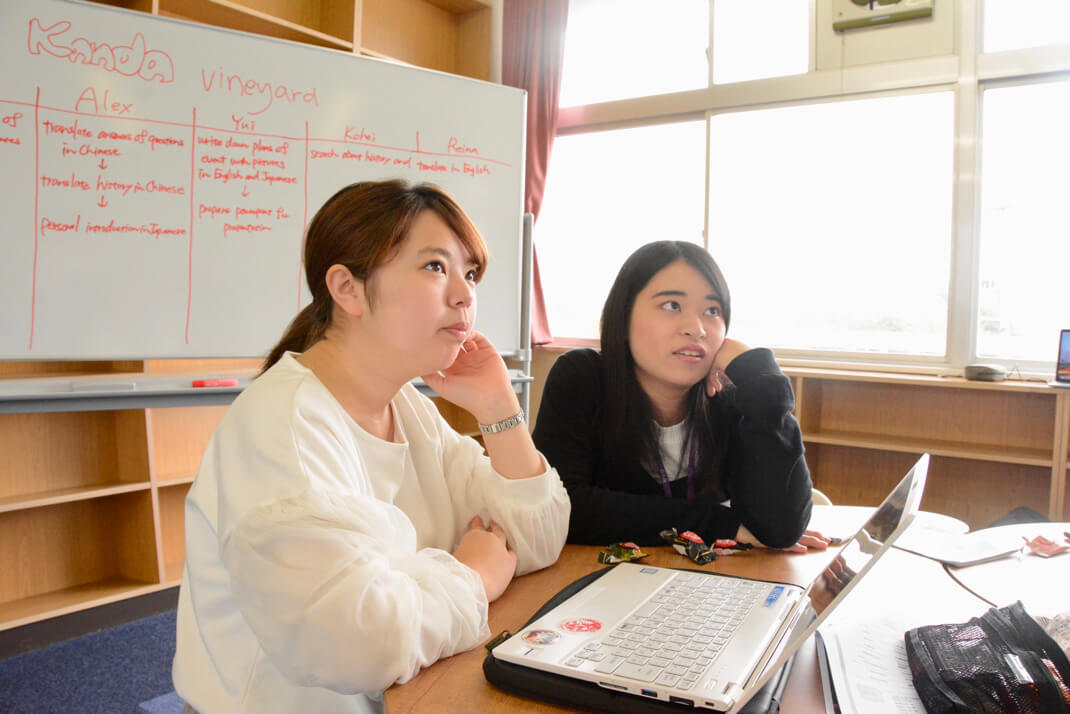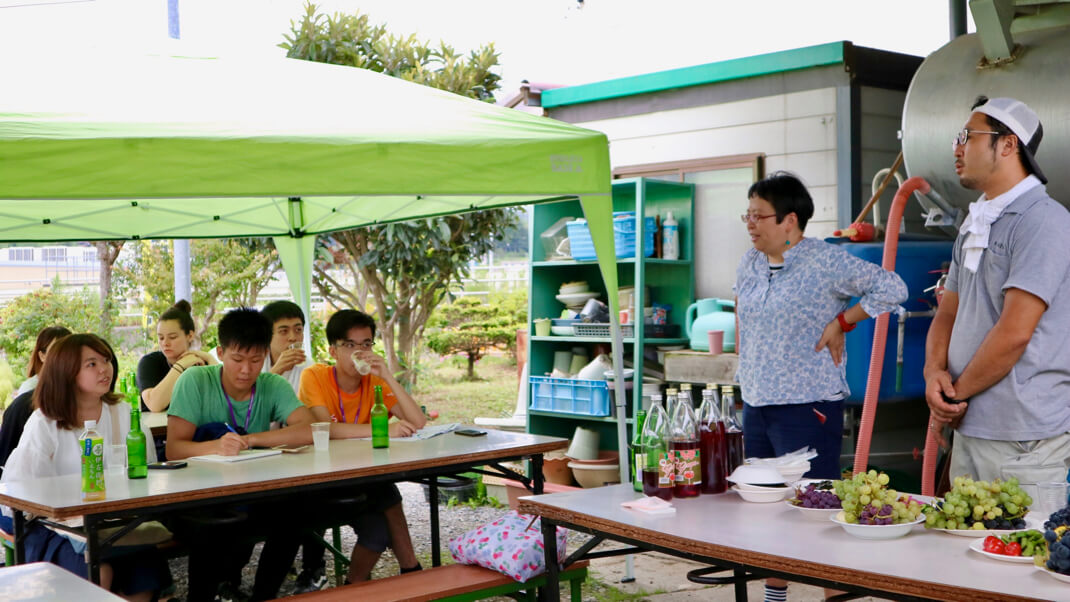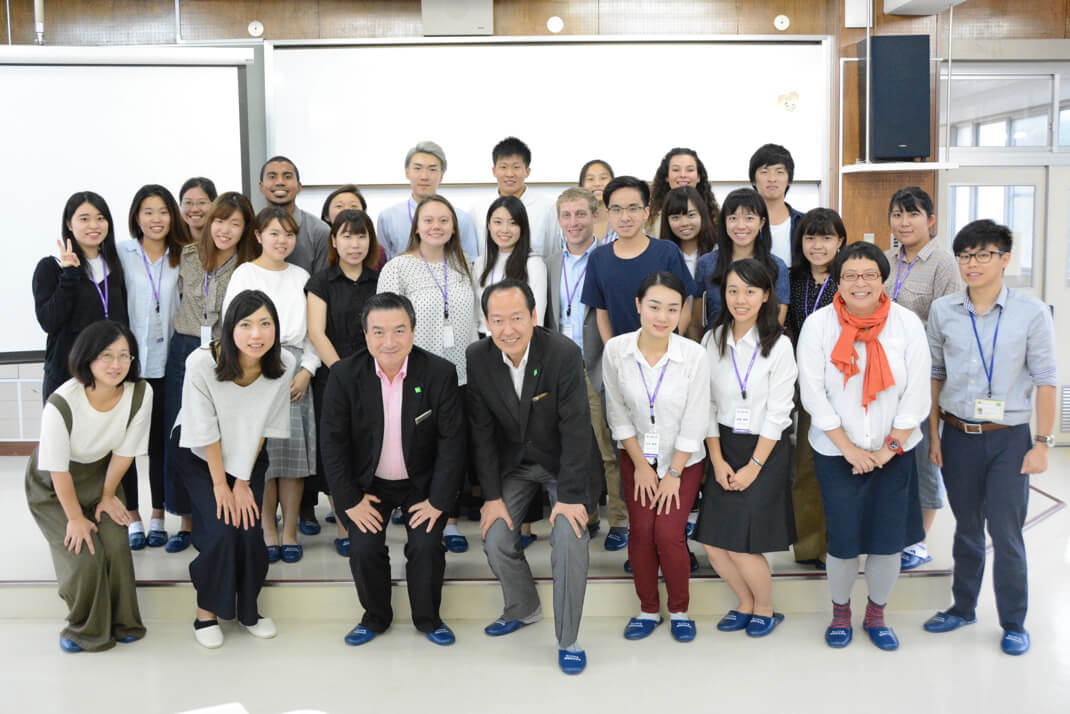Students from Stanford, Hong Kong, Rikkyo universities create content showcasing charms of disaster-hit city
Yuri Kuriyama(First-year student at the Department of Economic Policy Studies)
Feb 21, 2019
OVERVIEW
The Rikuzentakata Project aims to help rebuild Rikuzentakata, a city in Iwate Prefecture devastated by the March 2011 Great East Japan Earthquake and ensuing tsunami. The following activities were conducted in September 2018.

Yuri Kuriyama, left, attends a fieldwork session.
This year, the project’s theme was to “produce and publicize content showcasing attractions of Rikuzentakata City” through Marugoto Rikuzentakata, a general incorporated association entrusted by the Rikuzentakata municipal government to carry out and manage various projects. The students were divided into four mixed groups. One team planned and held an exchange meeting with Rikuzentakata residents, while three were tasked with making proposals, after undergoing on-site learning and experiences, to improve programs offered by Marugoto Rikuzentakata for foreigners, and making articles, videos and other content to publicize the city’s charms. Two of the three groups took part in the “Furusato Visit” program, in which they stayed in private homes near the coast or in the mountains for several hours during daytime. The remaining group visited Kanda Vineyard. They also stayed overnight at private homes and posted Instagram messages about what impressed them.
Near the end of the September 7-11 fieldwork, the students reported their ideas to the Rikuzentakata mayor and residents at a meeting. At the final presentation at Rikkyo University on September 12, the students explained their findings in front of Marugoto Rikuzentakata staff members.
The following is a gist of an interview with Yui Kuriyama, a first-year Rikkyo University student at the Department of Economic Policy Studies, College of Economics. She participated in the team that proposed improvements to the hands-on learning program at Kanda Vineyard and publicized charms of the city.
Please outline your activities and any episodes that made an impression on you.

A fieldwork session at Kanda Vineyard.
My most memorable moment came during my stay in a private home on the first day. When I asked the family why they warmly accepted us even though we were not from the city, one of them told me, “We want to be volunteers helping the volunteers.” They talked about how the disaster affected them and thoroughly answered our questions. It is important to actually visit places that were hit by the disaster. Directly hearing the residents’ experiences in person was a precious experience.
What did you feel and learn from this program?
How will you use this experience in the future?

Students pose for a photo with Rikuzentakata Mayor Futoshi Toba (center, front row) in Monty Dickson Hall at Rikuzentakata Global Campus.

Students hold certificates after completing the program.
*The completed work and reports are available on the Center for Global Human Resource Development website.
RECENT TOPICS
Oct 17, 2025
MSDA Rikuzentakata Field Trip 2025
Master of Social Development and Administration (MSDA) Course